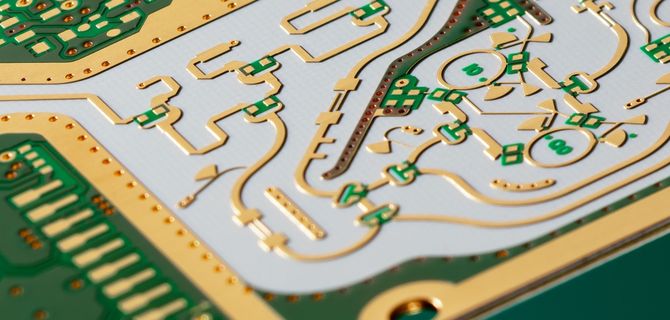On the PCB board, copper is a strong conductor with a high melting point, but you should still do your best to keep it cold. Here you need to size the trace width appropriately to keep the temperature within a certain range. However, this is where you need to consider the current flowing in a given trace. When working with power rails, high-voltage components, and other heat-sensitive parts of the board, the relationship between the PCB trace width and the ammeter can be used to determine the trace width that needs to be used in the layout. One problem with most tables is that they do not address controlled impedance routing. You've sized your traces so you can control the impedance, it's hard to determine the temperature rise just by looking at a table, and you'll have to use a calculator. However, an alternative is to use the IPC2152 nomogram to check that the current-temperature relationship is within the operating range in the controlled impedance curve.

A problem that often arises during PCB board design and routing is determining the recommended trace widths to keep the temperature of the device within a certain range for a given current value, and vice versa. Although copper has a high melting point and can withstand high temperatures, you should ideally keep the temperature rise of the board within 10°C. Allowing PCB board traces to reach very high temperatures increases the ambient temperature seen by the component, which places a greater burden on active cooling measures. The IPC2152 standard is the place to start when sizing yarns and vias. The formulas specified in these standards are simple for calculating the current limit for a given temperature rise, although they do not account for controlled impedance wiring. That being said, using a PCB board trace width vs. ammeter is a good starting point when determining PCB board trace width/cross-sectional area. This allows you to effectively determine an upper limit on the allowable current in the trace, which can then be used to size the trace for controlled impedance routing. The electrical properties of the substrate exhibit corresponding changes at high temperature when the temperature rise of the board operating at high current reaches very large values. The electrical and mechanical properties of substrates change with temperature, and if operated at high temperatures for extended periods of time, the substrates will become discolored and weakened. This is one of the reasons designers I know would size the traces to keep the temperature rise within 10°C. Another reason to do this is to accommodate a wide range of ambient temperatures rather than considering a specific operating temperature. The PCB board trace width versus current table below shows the trace width and the corresponding number of current values that would limit the temperature rise to 10°C at 1oz/sq. foot copper weight. This should give you an idea of how to size the traces in the PCB board.
Different trace thickness/copper weight. The trace thickness needs to be calculated based on the copper weight on the board. We only include the standard 1 oz/sq ft. value in feet. However, boards to operate at high currents often require heavier copper to accommodate higher temperature rises. No impedance data. If you need to use controlled impedance routing, you need to verify that the calculated trace size meets the constraints specified above. Alternative substrates. The data above is compiled for FR4, which will cover a large number of PCBs already in production. However, applications may require aluminum core PCBs, ceramic substrates or high-speed laminates. If you use a substrate with higher thermal conductivity, the traces will cool down as the heat is removed from the warm traces. For a first-order approximation, the temperature rise will be scaled by the ratio of the thermal conductivity of the desired substrate to that of FR4. If different copper weights are to be used, verify the controlled impedance trace size for temperature rise and current, then the nomogram from the IPC2152 standard should be used. This is a good way to size conductors for a specific current and temperature rise. Also, if you have chosen the trace width, you can determine the current that will cause a specific temperature rise. The red arrows show how to determine the required trace width, copper weight (i.e. trace cross-sectional area), and temperature rise current. In this example, first select the conductor width (140 mils), then draw the red arrows horizontally to the desired copper weight (1 oz/sq ft). We then trace vertically to the desired temperature rise (10°C) and then trace back to the y-axis to find the corresponding current limit (2.75A). The orange arrow moves in the other direction. We start with the desired current (1A) and trace horizontally to the desired temperature rise (30°C). Then we trace down vertically to determine the trace size. In this example, let's say we specify 0.5oz/sq. foot copper weight. After tracing back to this line, we traced back horizontally to the y-axis to find the conductor width of ~40 mils. Let's say the copper we want to use weighs 1oz/sq. ft. ; in this case we would find that the required trace width is 20 mils on PCB board.